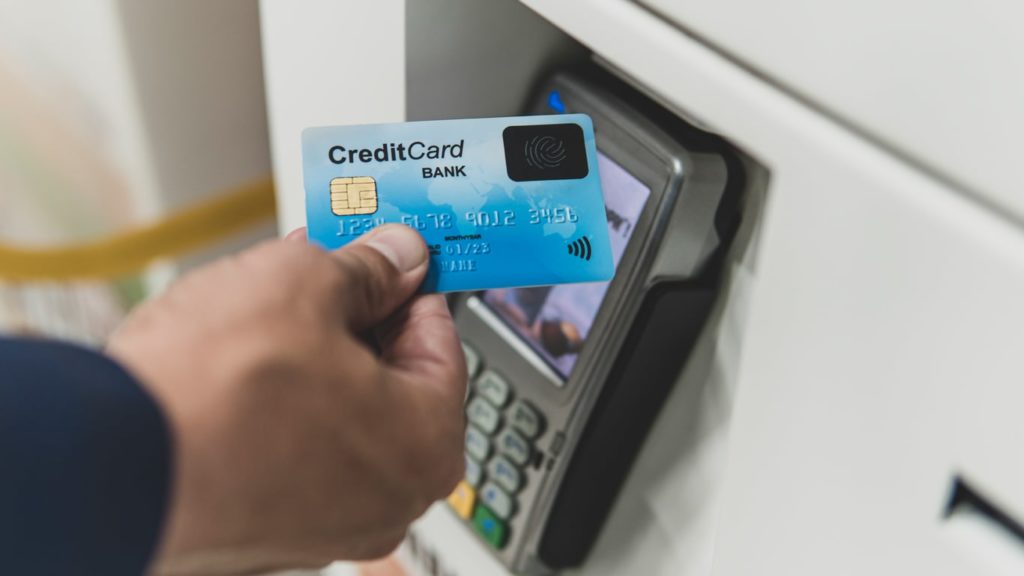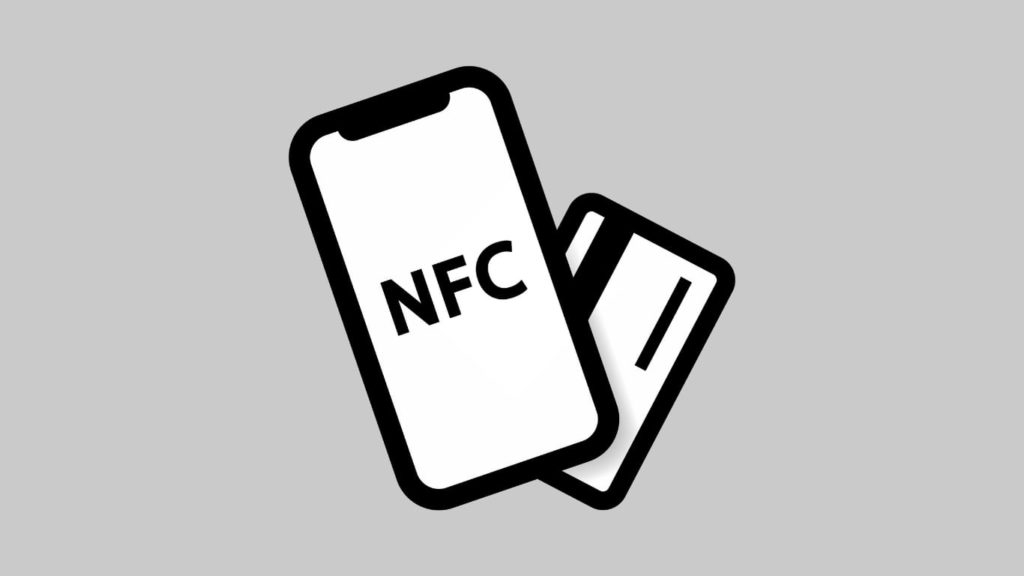
As we are moving into the technologically advanced world, more and more people own smartphones. With the rise in mobile users worldwide, it’s no surprise that technology like NFC (Near Field Communication) is gaining popularity. As the name implies, it allows interactions between electronic devices in proximity. We shall examine its definition in-depth in the next section. For now, know that NFC is a unique and secure technology that allows you to make contactless payments and exchange digital content. The other applications of NFC will be shown in the later section, too. With that said, let’s start with its meaning.
What is NFC?
Near Field Communication is derived from Radio Frequency Identification (RFID) technology, with the difference that it has a shorter communication range for security purposes.

Devices equipped with NFC can communicate only when they are within the range of 4 inches. This eliminates the need of launching applications as only bringing the devices in proximity can trigger the interaction.
Additionally, it saves up a lot of time as it can establish a connection rapidly. Now that you know what NFC is, let’s move on to understanding its workings.
How does NFC work?
NFC works on the principle of inductive coupling. For communication, both devices have an antenna that generates radio waves, thereby enabling communication with each other. Among them, at least one device should be in active mode. Whereas, the device in passive mode is powered by the electromagnetic field of the active one.

Broadly speaking, three modes of communication are supported in NFC. They are the card emulation mode, peer-to-peer mode, and reader mode.
The card emulation mode includes an active device such as a payment terminal that requests data from a passive device such as a smartphone that responds to the request.
In peer-to-peer mode, both devices are in active mode. They alternate between generating radio waves necessary for communication. An example of this mode is two smartphones transferring files such as photos or videos.
Lastly, the reader mode has two devices, one active and the other passive. The active device can be a smartphone that reads information from the passive device. Popular examples of this mode are NFC tags on product packaging, posters, or billboards.
Applications of Near Field Communication

Now that you are well-versed with the explanation and functionality of NFC, it’s time we look at its notable applications. The following are some of its uses.
Contactless payment
Generally, for making payments, the cards are inserted into readers and the PIN (Personal Identification Number) is entered to complete the transaction. NFC makes the process quicker and more convenient by eliminating the need for inserting the cards.
Instead, it supports contactless payment, where you have to bring your device within 4 inches of the contactless reader. You will receive a pop-up to confirm the payment for completing the transaction.
A few instances of apps that use NFC chips in smartphones are Google Pay, Apple Pay, and Samsung Pay. Considering that we are transitioning toward a cashless world, you can expect more advancements in NFC technology shortly.
Exchange of digital content
The other well-known representation of NFC is exchanging digital content between devices. Here, the two devices are brought together in close range. When the back of both devices is touched, a transfer prompt pops up. Once the transfer request is accepted, the data can be seamlessly transferred between devices.
An example of this is Android Beam, introduced by Google in the year 2011. The best part about this feature is that it transfers the data easily and quickly. This is especially useful for transferring data between old and new devices as it simplifies the setup process. However, Android Beam was replaced by Nearby Share in 2020 which allows data transfer via Bluetooth and Wi-Fi.
Marketing
Using NFC tags allows marketers to establish a unique connection between the brand and customers. It collects data for analyzing and contextualizing their interaction with the product. That way, marketers can reach the customers at the right time and in the right place, but most importantly, with the right offer to boost sales.
The NFC provides insights to marketers, allowing them to launch successful campaigns. Also, NFC tags can be attached to the product in the form of stickers which can then link the customer to online content. In other words, this technology bridges the online and offline customer experiences.
Customer engagement
NFC technology is becoming mainstream since the COVID-19 pandemic began. The reason is the increasing need for contactless technology. NFC technology provides a competitive edge to businesses as it allows them to streamline the customer journey. It offers endless opportunities for improving customer engagement, experience, and cross-selling products.
Suppose a customer visits the outlets. NFC tags on the products allow them to get information about the product, assisting them in making purchasing decisions. Similarly, these tags can recommend similar products that they can purchase along with the selected item.
To summarize, NFC gives a better understanding of customer attributes and their interaction with the products, which further helps businesses improve customer engagement.
Healthcare
The NFC technology is used in healthcare as it provides automation, convenience, and security. All these factors are essential in this system requiring critical care. NFC tags strengthen the security of healthcare institutions through effective tracking systems. They monitor the supplies and resources to prevent them from theft or other violent crimes.
The other use of NFC tags in health care is getting real-time data about medications. That way, the authenticity, dosage, and expiration date of the medications can be easily viewed to avoid damage from potential harm.
The above-discussed examples were a few applications of NFC technology. With the advancement in smart devices, the use of NFC will rise to provide integrated functions. From loyalty programs to controlling household equipment, NFC tags improve security while providing convenience and saving time. To sum up, NFC brings innovation to various industries and therefore is widely used.
Impact of NFC
The following table records both the positive and negative impacts of NFC technology.
| Aspect | Positive | Negative |
|---|---|---|
| Convenience | NFC allows contactless and fast payments, helps Bluetooth pairing | Has several security concerns, A limited range |
| Payment | Supports quick and easy mobile and contactless payments | Can be misused for unauthorized transactions |
| Data transfer | Faster data transfer speeds, makes device pairing easier | The limited range might affect data transfer |
| Smart Devices | Helps IoT in connectivity and Bluetooth solutions. | There might be some compatibility issues |
| Environment | Reduces the need for a plastic card, | However, it increases e-waste |
| Business | Enhances customer experience, which is good for business | Can collect user data |
Risks associated with NFC
Despite being beneficial, NFC doesn’t come without challenges. There are certain risks associated with the use of NFCs, such as:
1. Privacy
The user’s privacy remains at risk, as proven by the constant news about hackers gaining access to private data via NFC. One particular case that shook the world was when people started to track others using Apple AirTags, a device that uses NFC.
2. Payment fraud
The same goes for NFC-enabled payment solutions. These can also be manipulated and misused, especially in cases like fraud. But how? Simply because, unlike traditional payment systems like a credit card that uses an EMV chip and PIN, NFC payment systems do not have any additional authentication processes, they are easy to take advantage of.
3. Data tampering
NFC transfers data over a short range but with greater speed. However, without proper encryption and safety protocols, even this short exchange stands to lose out, especially if an unauthorized card reader tampers with the exchanged data.
4. Data interception
The short range of NFC was, in fact, designed to ensure safety by forcing two parties into proximity. Such an exchange should be very secure, as any third person who wants to intercept the data must be present within the vicinity of these two parties. However, we have seen cases of MITM attacks that utilize RFID skimming to intercept even NFC data exchange.
5. Session Replay
A session replay uses the information that was used to execute a particular transaction within a particular session by replaying it for other sessions as well. These types of attacks are fairly common among NFCs.